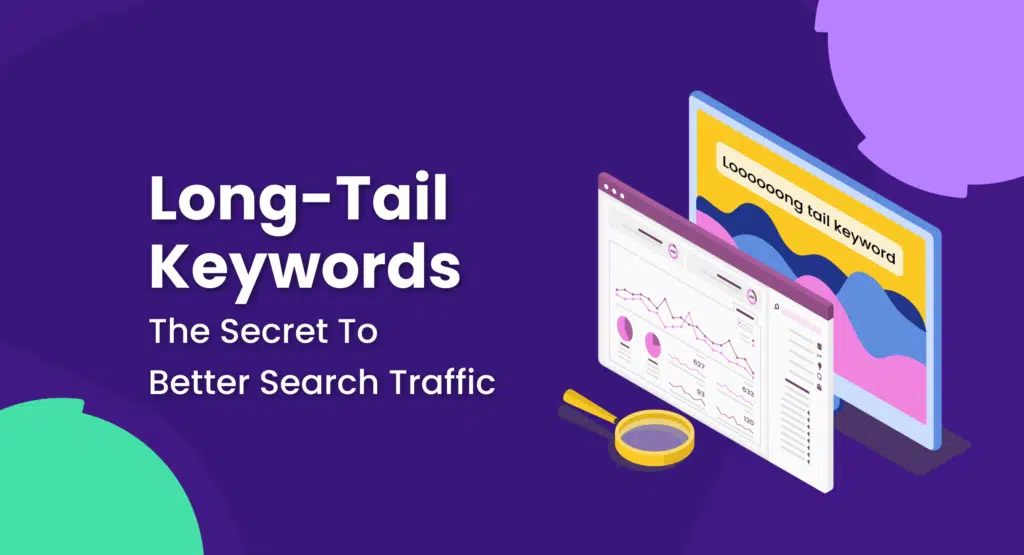5 Advantages of Long-Tail Keywords in SEO
In this guide, we will explore five key advantages of incorporating long-tail keywords into your SEO strategy and how they can boost your online presence.

In the competitive world of SEO, long-tail keywords are often undervalued, yet they offer significant benefits for improving search engine rankings and driving targeted traffic to your website. Unlike broad, generic keywords, long-tail keywords are more specific and typically consist of three or more words. This specificity not only helps you target a niche audience but also enhances the relevance of your content. In this guide, we will explore five key advantages of incorporating long-tail keywords into your SEO strategy and how they can boost your online presence.
1. Increased Relevance and Targeted Traffic
Understanding the Advantage
Long-tail keywords are highly specific phrases that capture detailed search intents. For example, instead of targeting a broad keyword like “shoes,” a long-tail keyword would be “women’s waterproof hiking boots for winter.” This specificity means that users who search for long-tail keywords have a clearer intent and are often further along in the buying cycle.
Why It Matters
- Higher Conversion Rates: Users searching for long-tail keywords are usually closer to making a purchase decision, resulting in higher conversion rates. They know exactly what they want, so they are more likely to convert once they find it.
- Reduced Competition: Long-tail keywords generally face less competition compared to broad keywords, making it easier to rank higher in search results. This reduced competition means your content can stand out more effectively.
Example
If you run an online store selling hiking gear, optimizing for “women’s waterproof hiking boots for winter” will attract users specifically looking for that product, increasing the likelihood of a purchase compared to targeting the generic term “boots.”
2. Improved SEO and Higher Search Rankings
Understanding the Advantage
Long-tail keywords are less competitive and more focused, which makes it easier to rank for them compared to broad keywords. Search engines can better understand the content of your page and match it with user queries.
Why It Matters
- Better Content Optimization: By targeting long-tail keywords, you can create highly relevant content that matches users’ search intents more precisely. This improves the chances of your content being deemed valuable by search engines.
- Increased Visibility: Higher rankings for long-tail keywords often lead to increased visibility in search results, which can drive more organic traffic to your site.
Example
A blog post titled “10 Tips for Choosing the Best Women’s Waterproof Hiking Boots for Winter” is more likely to rank well for long-tail keywords related to women’s hiking boots than a more generic post titled “Hiking Boots.”
3. Enhanced User Experience
Understanding the Advantage
Long-tail keywords allow you to tailor your content more precisely to what users are searching for. This results in a more relevant and satisfying user experience.
Why It Matters
- Relevant Content: When users find content that matches their specific queries, they are more likely to engage with it and find it useful. This can lead to longer time spent on your site and lower bounce rates.
- Satisfaction: Providing answers to highly specific questions or needs improves user satisfaction and can foster trust and loyalty.
Example
If a user searches for “best eco-friendly waterproof hiking boots for women,” and they land on a page that discusses this exact topic in detail, they are more likely to have a positive experience compared to landing on a page that broadly covers “hiking boots.”
4. Better ROI and Cost-Effectiveness
Understanding the Advantage
Long-tail keywords generally have lower cost-per-click (CPC) in paid search campaigns and require less investment in SEO efforts due to lower competition.
Why It Matters
- Lower CPC: In pay-per-click (PPC) advertising, long-tail keywords often cost less per click because they are less competitive. This can lead to more cost-effective ad campaigns.
- Higher ROI: The combination of lower CPC and higher conversion rates makes long-tail keywords a more cost-effective way to drive targeted traffic and achieve a better return on investment (ROI).
Example
Running a PPC campaign for “best eco-friendly waterproof hiking boots for women” may result in lower CPC compared to bidding on “hiking boots,” providing a more cost-effective way to attract potential customers.
5. Greater Opportunities for Content Creation
Understanding the Advantage
Long-tail keywords provide specific topics and questions that can be addressed through content creation. This leads to a more diverse content strategy and the ability to capture a wider range of search queries.
Why It Matters
- Content Ideas: Long-tail keywords can inspire content that addresses niche topics, questions, or problems that your audience is interested in. This can help you develop comprehensive content strategies that cover various aspects of your industry or niche.
- Enhanced Authority: Creating detailed content around long-tail keywords can help establish your authority in specific areas, leading to better engagement and credibility.
Example
If you discover that users frequently search for “how to choose the best eco-friendly waterproof hiking boots for different terrains,” you can create detailed guides or blog posts that address this specific need, enhancing your content’s value and authority.
Implementing Long-Tail Keywords: Best Practices
1. Conduct Thorough Keyword Research
- Tools: Use keyword research tools like Google Keyword Planner, SEMrush, Ahrefs, or Ubersuggest to find relevant long-tail keywords.
- Competitor Analysis: Analyze competitors to identify long-tail keywords they are targeting and discover gaps in their content that you can fill.
2. Optimize Your Content
- Use Naturally: Integrate long-tail keywords naturally into your content, including titles, headers, body text, and meta descriptions.
- Create Detailed Content: Address specific queries or needs related to your long-tail keywords with comprehensive and informative content.
3. Monitor and Adjust
- Track Performance: Monitor the performance of your long-tail keywords using tools like Google Analytics and Google Search Console.
- Adjust Strategy: Based on performance data, adjust your keyword strategy to optimize for the best-performing long-tail keywords and explore new ones.
Final Thought
Long-tail keywords are a powerful tool in the SEO toolkit that can drive targeted traffic, improve search rankings, and enhance user experience. By focusing on specific, multi-word phrases, you can better meet user needs, reduce competition, and achieve higher conversion rates. Incorporating long-tail keywords into your SEO strategy can lead to significant improvements in your website’s performance and visibility. Regularly research, optimize, and adjust your long-tail keyword strategy to stay ahead in the competitive digital landscape and maximize your SEO efforts.
15 FAQs
What are long-tail keywords? Long-tail keywords are specific, multi-word phrases that are highly targeted and less competitive compared to broad keywords.
Why are long-tail keywords important for SEO? They help drive targeted traffic, improve search rankings, and provide better user experience due to their specificity.
How do long-tail keywords differ from short-tail keywords? Long-tail keywords are more specific and usually consist of three or more words, while short-tail keywords are broader and typically consist of one or two words.
How can I find long-tail keywords for my website? Use keyword research tools, analyze competitor content, and review search suggestions and related searches for ideas.
Are long-tail keywords less competitive? Yes, long-tail keywords typically have lower competition compared to broad keywords, making it easier to rank for them.
Can long-tail keywords improve conversion rates? Yes, because users searching for long-tail keywords often have a clearer intent and are further along in the buying cycle.
How should I incorporate long-tail keywords into my content? Use them naturally in titles, headings, body text, meta descriptions, and URL slugs to optimize your content effectively.
What are some examples of long-tail keywords? Examples include “best eco-friendly waterproof hiking boots for women” or “how to choose the right hiking boots for different terrains.”
How do long-tail keywords affect PPC campaigns? They generally have a lower cost-per-click (CPC) and can result in a more cost-effective PPC campaign with higher ROI.
Can long-tail keywords help with voice search optimization? Yes, long-tail keywords often match the natural language used in voice searches, making them valuable for voice search optimization.
Should I focus solely on long-tail keywords? No, while long-tail keywords are valuable, a balanced strategy that includes both long-tail and short-tail keywords is often most effective.
How can I measure the success of long-tail keywords? Use tools like Google Analytics and Google Search Console to track metrics such as search rankings, traffic, and conversions.
Are long-tail keywords useful for local SEO? Yes, long-tail keywords can be highly effective for local SEO, especially when they include location-specific terms.
How often should I update my long-tail keyword strategy? Regularly review and update your strategy based on performance data and changes in search trends or user behavior.
Can long-tail keywords improve my content marketing efforts? Yes, they can provide specific content ideas and help create targeted content that addresses your audience’s needs and interests.
Get in Touch
Website – https://www.webinfomatrix.com
Mobile - +91 9212306116
WhatsApp – https://call.whatsapp.com/voice/9rqVJyqSNMhpdFkKPZGYKj
Skype – shalabh.mishra
Telegram – shalabhmishra
Email - info@webinfomatrix.com
What's Your Reaction?









.jpg)












